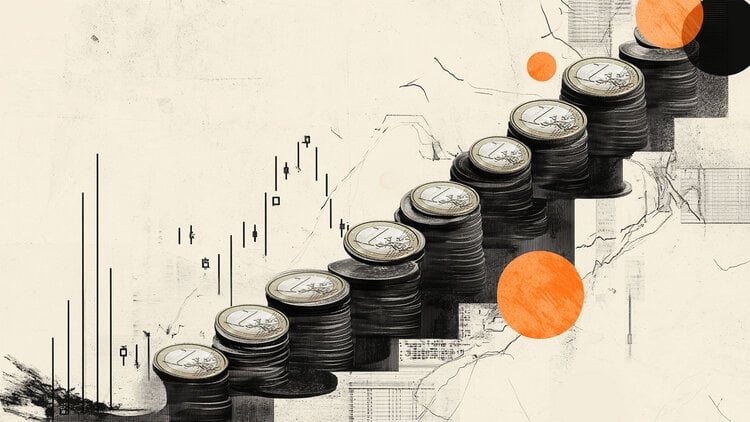- The US Dollar is trading relatively flat despite USD/JPY near 160.00.
- All eyes will be on US Q1 GDP and May PCE data as focal points this week.
- US Dollar Index Pivots Around June High.
He US dollar (USD) remains sideways to slightly lower in the European trading session on Monday, with markets seeing headlines about political difficulties in Europe fade. This means a decrease in safe haven flows into the Dollar. However, a counterweight comes from the Japanese Yen (JPY), which is devaluing further against the Dollar and has the 160.00 level within reach, where Japan’s Finance Ministry last intervened.
On the economic data front, there are some lighter numbers to start the week, such as the Chicago Fed Activity Index for May and the Dallas Fed Manufacturing Business Index for June. On top of that, the US Treasury is heading back to the markets to allocate some US debt, while Federal Reserve Bank of San Francisco President Mary Daly will close this Monday with some comments.
Daily Movements and Market Drivers: Some Minor Optimism
- At 12:30 GMT, the Chicago Fed National Activity Index for May will be published. The April number was -0.23, with no forecast available for the May number.
- At 14:30 GMT, the Dallas Fed Manufacturing Business Index for June will be released. The previous print was -19.4, with no forecast available.
- The US Treasury will auction a 3-month and a 6-month bond at 15:30 GMT.
- At 18:00 GMT, Federal Reserve Bank of San Francisco President Mary Daly will give a speech and participate in a question and answer session with Deidre Bosa, host of “TechCheck” on CNBC.
- Stocks aren’t breaking any records on Monday, with minor gains and losses on the stock ticker. There are no true outliers to report during the European trading session.
- The CME’s Fedwatch tool supports a rate cut in September, with odds now at 59.5% for a 25 basis point cut. A rate pause has a 34.1% chance, while a 50 basis point rate cut has a slim 6.4% chance.
- The US 10-year Treasury yield is trading at 4.25%, fairly stable since the end of last week.
Dollar Index Technical Analysis: Watch out for USD/JPY
The DXY is declining a bit on Monday, and while economic data will be very important again, as always, traders will need to keep a hawk eye on the US Dollar against the Japanese Yen (USD/JPY) this week. With that currency pair trading near 160.00, markets are bracing for a possible risk of intervention by the Japanese government. The last time the Japanese government intervened, USD/JPY fell 5% and the DXY dropped to 104.52.
To the upside, there are no significant changes in levels for traders to watch. The first level to watch is 105.88, which caused a rejection in early May and on Friday of last week. Higher up, the biggest challenge remains 106.51, the year-to-date high from April 16.
On the downside, the 105.52 level is the first support before the SMA trifecta. First is the 55-day SMA at 105.20, protecting the round figure at 105.00. A little lower, near 104.64 and 104.48, both the 100-day and 200-day SMA form a double layer of protection to withstand any decline. If this area breaks, look for 104.00 to save the situation.
The U.S. dollar
The United States Dollar (USD) is the official currency of the United States of America, and the “de facto” currency of a significant number of other countries where it is in circulation alongside local banknotes. According to 2022 data, it is the most traded currency in the world, with more than 88% of all global currency exchange operations, equivalent to an average of $6.6 trillion in daily transactions. After World War II, the USD took over from the pound sterling as the world’s reserve currency.
The single most important factor influencing the value of the US Dollar is monetary policy, which is determined by the Federal Reserve (Fed). The Fed has two mandates: achieve price stability (control inflation) and promote full employment. Your main tool to achieve these two objectives is to adjust interest rates. When prices rise too quickly and inflation exceeds the 2% target set by the Fed, the Fed raises rates, which favors the price of the dollar. When Inflation falls below 2% or the unemployment rate is too high, the Fed can lower interest rates, which weighs on the Dollar.
In extreme situations, the Federal Reserve can also print more dollars and enact quantitative easing (QE). QE is the process by which the Fed substantially increases the flow of credit into a clogged financial system. This is an unconventional policy measure used when credit has dried up because banks do not lend to each other (for fear of counterparty default). It is a last resort when a simple lowering of interest rates is unlikely to achieve the necessary result. It was the Fed’s weapon of choice to combat the credit crunch that occurred during the Great Financial Crisis of 2008. It involves the Fed printing more dollars and using them to buy US government bonds, primarily from financial institutions. QE usually leads to a weakening of the US Dollar.
Quantitative tightening (QT) is the reverse process by which the Federal Reserve stops purchasing bonds from financial institutions and does not reinvest the principal of maturing portfolio securities in new purchases. It is usually positive for the US dollar.
Source: Fx Street
I am Joshua Winder, a senior-level journalist and editor at World Stock Market. I specialize in covering news related to the stock market and economic trends. With more than 8 years of experience in this field, I have become an expert in financial reporting.







